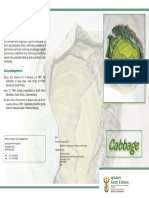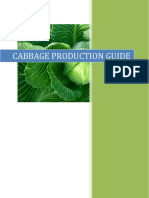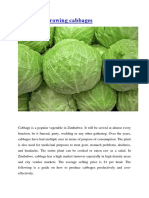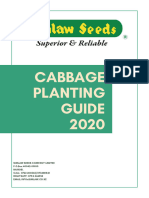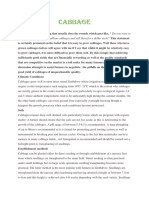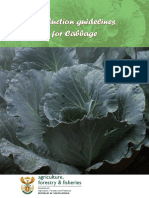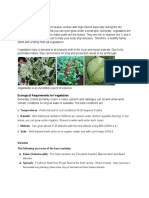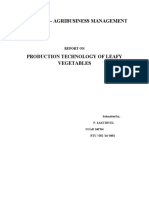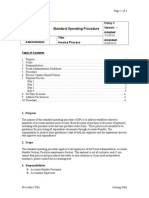0% found this document useful (0 votes)
101 views8 pagesCabbage Production Guide
Nolofatso Ncube is an experienced farmer and agronomist based in Gwanda, focusing on cabbage production and agricultural training through her startup, AgriPal. The document outlines essential practices for cabbage farming, including soil preparation, variety selection, planting techniques, irrigation, and pest control. It emphasizes the importance of proper fertilization, irrigation management, and disease prevention to ensure a successful cabbage crop.
Uploaded by
leadisonkCopyright
© © All Rights Reserved
We take content rights seriously. If you suspect this is your content, claim it here.
Available Formats
Download as PDF, TXT or read online on Scribd
0% found this document useful (0 votes)
101 views8 pagesCabbage Production Guide
Nolofatso Ncube is an experienced farmer and agronomist based in Gwanda, focusing on cabbage production and agricultural training through her startup, AgriPal. The document outlines essential practices for cabbage farming, including soil preparation, variety selection, planting techniques, irrigation, and pest control. It emphasizes the importance of proper fertilization, irrigation management, and disease prevention to ensure a successful cabbage crop.
Uploaded by
leadisonkCopyright
© © All Rights Reserved
We take content rights seriously. If you suspect this is your content, claim it here.
Available Formats
Download as PDF, TXT or read online on Scribd
/ 8



